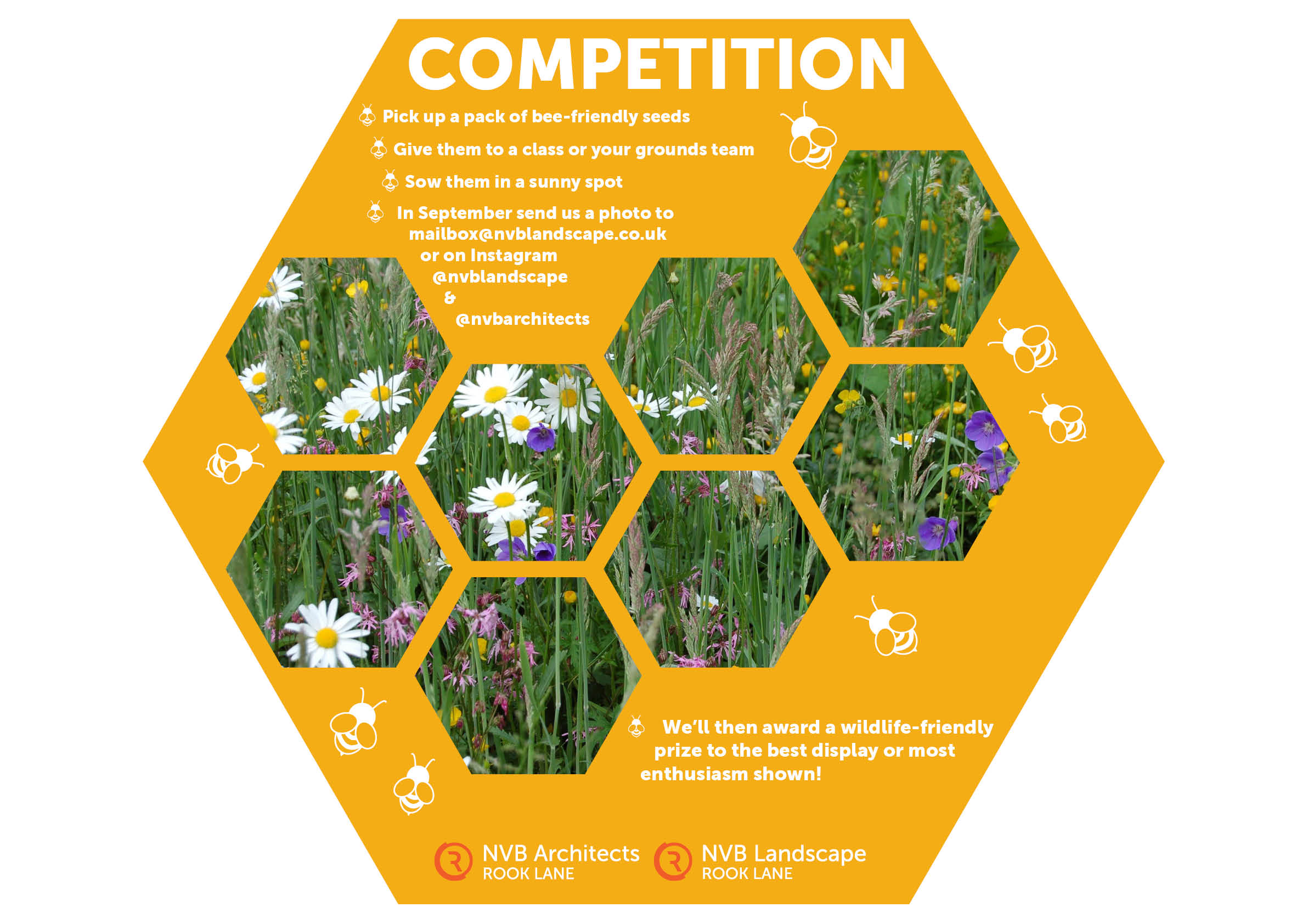June 16, 2022
At the ISBA Conference in May we gave seeds to the attendees who we have encouraged to plant them at their schools or home and send us photos via Instagram in September. We’ll then choose the winner and send them a prize. In case any haven’t yet sown their seeds, like us, here is some advice to do so.
Tag us in your posts with @nvblandscape and #nvblandscapeseedbomb
WHEN & WHERE – Normally meadow flower seeds are sown in spring and autumn when you can ensure that no frosts or hot sun are likely to damage young tender shoots. Ideally the seeds will be sown on a site that is warmed by sun for at least half of the day. Wildflowers often establish best on thin or fairly poor soil. They are often out competed by weeds in rich loamy soil.
PREPARATION – Wildflower seed bombs are nutrient-rich and give the plants a head start to grow because each seed bomb is a combination of seed, compost and clay. Before using them, all unwanted plants, grass, and weeds have to be removed from the area of planting so that there is bare soil in which the wildflowers can establish. You can use a hoe or hand-tools to clear the planting area back to bare soil or spread a plastic sheet in order to smother any existing weeds and grass. The choice of technique depends upon the time and energy you have for preparing the soil!
HANDLING THE SEED BOMBS – The seed bombs should not be broken. Germination occurs after the clay is permeated with water. Seed bombs that have been scattered should be left untouched once it has rained. The number of seed bombs needed to depend upon your coverage area. A square meter will need about twenty seed bombs while about 5-6 seed bombs will suffice for a small pot. Larger pots will need about 12 or so of them.
HOW TO PLANT
WATERING – Keep the planted area moist with a mild spray throughout the early growth period. If the seedbed looks dried, water it to ensure that the topsoil is moistened. Watering will hasten the germination and growth process.
SPROUTING – If you are regular with your watering then you can begin to see sprouts in a matter of seven to fifteen days or so. However, flowering takes time. Some species will flower in the first year while some will do so only from the second year onwards. If you keep your wildflowers watered and weed-free then soon you will have a beautiful wildflower meadow to enjoy.
